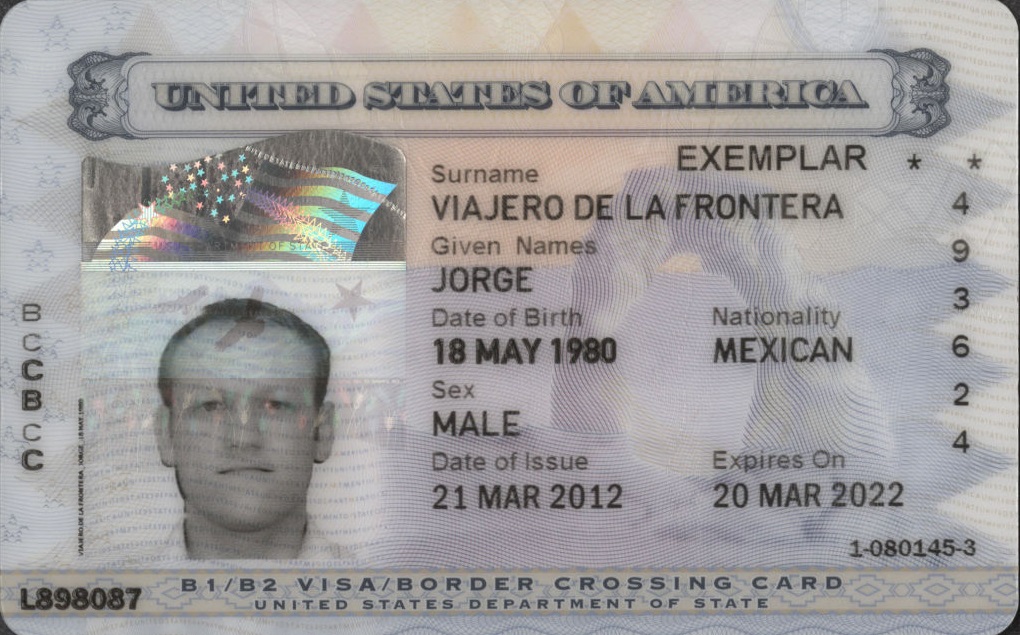All You Need To Know About Border Crossing Card (BCC)
The United States is one of the most visited countries in the world. Millions of people visit the United States every year for tourism, business, and other purposes. Most of the foreign tourists come from Mexico and Canada. The US immigration authorities have established a streamlined entry process through permits and cards to make it convenient for the residents of Mexico to visit the country.
This article will provide a brief introduction to Border Crossing Card (BCC) and how it helps Mexican citizens enter the United States without going through a stressful and lengthy process:
What is a Border Crossing Card (BCC)?
The US Department of State introduced the Border Crossing Card (BCC) in 1988. It is an identity document as well as a B1/B2 visa that entitles Mexican citizens to enter the United States. The Illegal Immigration Reform and Immigrant Responsibility Act of 1996 provide the legal basis for the issuance of BCC.
Previously known as the “laser visa”, a Border Crossing Card also serves as a DSP-150. A BCC comes in the form of a laminated card designed with advanced technology and graphics. When first issued in the year 1988, Border Crossing Cards were designed with basic technology. However, the latest version of a BCC is technologically sophisticated.
Being a Mexican, when you’re granted with a Border Crossing Card, you can visit the United States for tourism or business purposes for three days (72 hours). It’s prohibited to travel to the US for work on a BCC.
How Far Can I Travel Within the U.S. on a BCC?
There are some limitations in terms of how far someone can travel within the United States on a Border Crossing Card. You can travel up to 25 miles beyond the border into Texas and California. However, in New Mexico, you can go as far as 55 miles from the border and 75 miles into Arizona. If you wish to travel farther or stay longer, you can request an I-94 from the Custom and Border Protection Officer. I-94s are now issued electronically at air and sea ports.
Does a BCC Entitle You to Stay in the US for 10 Years?
A BCC card usually remains valid for ten years. It’s important to understand that the ten-year validity is the time period during which you can cross the border; it doesn’t mean you can stay in the United States for 10 years on a BCC. As mentioned earlier, a BCC allows you to stay in the US for three days. If you live in the country beyond the allowed time period, it will lead to serious consequences.
What Does a Border Crossing Card Look Like?
Take a look at the following image which is the front of the updated version of a BCC:

Source: wikipedia.org
How to Qualify For a Border Crossing Card?
The process involves fairly strict eligibility criteria when it comes to qualifying for a BCC. If you want a Border Crossing Card, you should meet the following requirements:
- You must be a Mexican citizen residing in Mexico
- You have to convince the authorities that you will return to your home country within the allowed time period and that there is no intention to stay in the US beyond the allowed time.
- You must meet all the requirements for B1/B2 visas: sufficient funds to cover the stay, documents to prove that you don’t have a criminal record, etc.
Applying for a Border Crossing Card (BCC)
You need to apply using the standard procedures set by consular sections in Mexico. The process to obtain a BCC is somehow similar to that of a B1 or B2 visa. You need to gather all the relevant and required documents. The standard fee for a BCC is $185.
Mexican citizens under the age of 15 have to pay $15 if their guardian or parents are also applying for a BCC. At the time of your interview with the consular, you have to produce all the necessary documents along with the fee receipt.
Typically, a BCC remains valid for 10 years. For children under the age of 15, a BCC either expires after ten years or when the children turn 15. You can find the expiration date of your BCC on the front of your card.
If you’re planning to visit the United States, it’s advisable to seek guidance to avoid unnecessary stress and red tape. Contact us for more information!